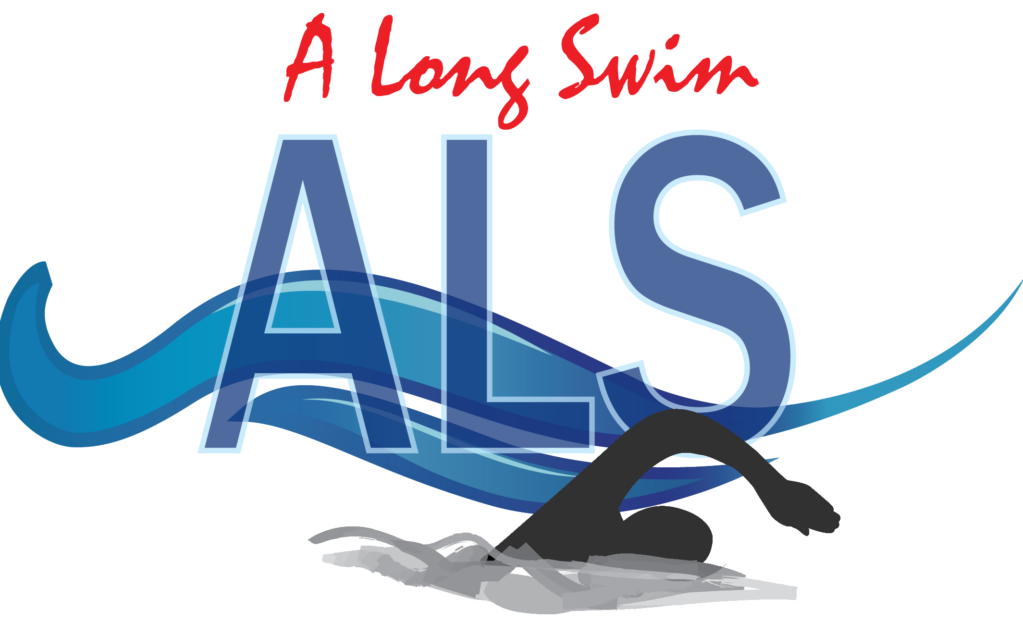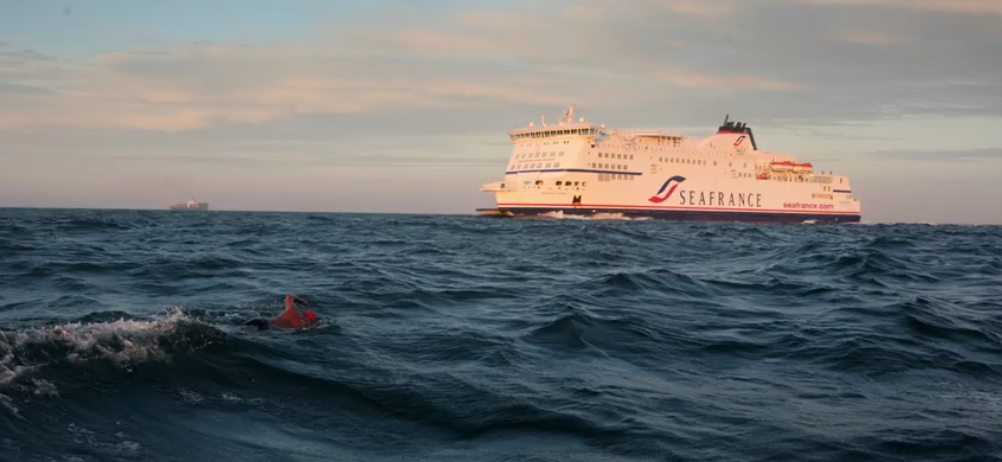The English Channel — the busiest shipping channel in the world.
Topping out at 62 degrees.
Half of the swim is in pitch darkness.
In this solo marathon, you may not touch the boat or another human.
You are alone.
“A LONG SWIM” TEAM CONQUERED THE ENGLISH CHANNEL IN AUGUST 2011
Preparing for the English Channel with swims all over the country for two years prior really made this endeavor a team project for my family who accompanied me on every swim as my team. When we arrived in England, we felt very well prepared.
We scheduled our trip so that we would have a few days to adjust before the swim, but our slot opened up immediately. The night we arrived in Dover, my boat pilot, Lance Oram, dropped the bomb. “I’m glad you’re here, because we think that there may be a slot tomorrow, and you should take it if you can. You’ll have strong winds at the beginning, but the wind will die down after an hour or so.” Jet lagged or not, we figured we had better jump at the opportunity.
The next morning was a whirlwind as we arrived at Dover Harbor, we met Lance and the rest of his crew, and were off. The Channel rules require that you start from dry land, so you actually have to swim from the escort boat to the starting beach. I dropped in the water, swam to the beach, gathered my thoughts, and Lance blew the air horn. I stepped into the water of the English Channel at 1:00 p.m. on August 21st.
ALMOST IMMEDIATELY, THE WAVES KICKED UP, JUST AS LANCE HAD PREDICTED
The wind (Force 5, which is 19 – 24 miles per hour) was blowing in the opposite direction of the tide, which made for very confused seas. The waves were about five feet, but it was the lack of rhythm to the waves that made it difficult to swim. I just couldn’t get a consistent stroke cadence going, and I was swallowing and inhaling lots of seawater. My teammates on the boat began to get sea sick, one by one. Some would be out of commission for the whole trip. They kept this a secret from me and I know now that it must have been agony.
Lance’s prediction that the wind would turn to follow the tide didn’t materialize, so the five-foot choppy waves were with us for seven hours.
It was a real grind.
The English Channel is a busy shipping lane, with some 600 commercial vessels every day. My head was down most of the time, so I never saw any freighters or tankers. Susan, my wife, saw dozens, though none were close enough to be of a concern. One ferry boat, the “Sea France,” passed us just as the sun was setting and Susan, who is a professional photographer, took the most glorious photograph of the whole trip. It’s the signature shot for A Long Swim and is the backdrop for this essay.
As any marathon swimmer knows, it is often hard to swim straight, so course corrections are constant as you gauge your distance from the boat. In our case, swimming close to the boat was difficult because it was terrifying. Lance’s boat is 40 feet long and is a sturdy fishing boat. As the Sea Satin pitched around in the waves, I was looking at it from the water level and made it feel like it was about to fall on me. My choice was to stay close to the boat (and let the boat absorb some of the pounding of the waves) and be terrified, or keep my distance from the boat and take the full brunt of the waves myself. I kept my distance, but I will dream about that boat pitching and rolling for a long time.
The Channel is famous for two things that concerned me; cold and jellyfish. I had trained a lot in cold water, mostly Lake Michigan. The water in England was 62F the whole time, and it never really affected me. It got a little chillier after midnight, but the cold just wasn’t an issue. The Channel is also famous for jellyfish, and I only bumped into one that stung my chest for a second and was gone. The team on the boat saw several pink ones that were “larger than basketballs.” They kept this a secret from me, too.
The English Channel and ALS Video from Douglas McConnell on Vimeo.
I count my strokes while I swim. It helps me keep track of time and distance traveled. I had mentally prepared myself for 40,000 strokes, and it turned out that my number was just about right; it took 40,538 strokes to make it across the English Channel.
The feeding routine for this swim is critically important. Between the swimming and the cold water, swimmers burn between 1,000 and 1,200 calories an hour. Every thirty minutes, we stopped for a few seconds, my son Gordy would toss me a squeeze bottle on a rope tether, and I would drink as much of a high carbohydrate drink as I could before I resumed swimming. It is a drink that I have custom formulated, and it was the only thing that I drank for my time in the water. As the day turned to night, Gordy and his brother Bill heated the water a bit
before they fed me, which really felt good.
Swimming in the dark is a separate challenge, and almost seven of the fourteen hours were at night. We had practiced this ahead of time because we knew that it as something we were going to face, but we never expected seven hours of it. I had two blinking strobe lights on my goggles, which meant that the crew could see me from the boat. The darkness changed the water, too. During the daylight, I was water was much more clear than I had expected, but after dark, the water was inky black. It is an odd feeling of staring into infinity.
Swim to the light
The finish was not as I had imagined. Lance stopped me to say, “You’re there, mate. I am in shallow water and can’t go any further. At 3:00 a.m., it was so dark that I couldn’t see even an outline of the shore, so Lance turned his spotlight toward the water, and told me to follow the beam of light about 100 yards to the beach. I had no idea we were that close to shore, so I dutifully did as I was told, and swam for the light. I finally felt the sand under my left hand, and I knew I could stand. I had made it to France.
English Channel – Late Night Crew Discussion from Douglas McConnell on Vimeo.
Walking out of the Channel was very difficult. My legs had been cramping for several miles, so it was hard to pull my legs up to stand. I staggered onto the beach and started walking. The Channel rule is that you have to finish on dry land, so I kept walking. Our official Channel observer was watching me from 100 yards away through a keyhole of light, but I walked until I heard the peal of the air horn, just to be sure. It was just an air horn, but to me it was as glorious as the Grand Finale at the fireworks on Independence Day.
Because of my sudden inactivity and the fact that the air temperature had fallen into the 40s, I started to get cold. I walked off the beach, swam back to the boat and climbed aboard. I was in France for about three minutes.
Getting back to the boat to join the rest of the team was the real finish line for me. There were hugs, warm towels and dry clothes. We started the ride back to Dover as Susan and I got some hot tea and compared stories about what we had just been through. The kids found places on the boat to conk out after an exhausting night. The sun that had set a long time ago began to rise.
I was overwhelmed with the feeling of how lucky I am to have my family, to have them play such critical roles on the A Long Swim Team, and to have them there to share this extraordinary experience.
If you are the teammate in the Speedo, this is a good team to be on.

